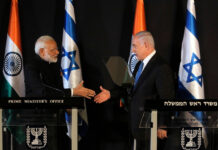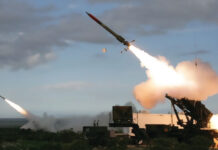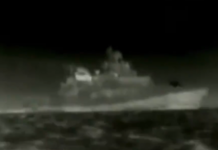World military expenditure totalled $1.75 trillion in 2012, a fall of 0.5 per cent in real terms since 2011, according to figures released today by Stockholm International Peace Research Institute (SIPRI).
The fall—the first since 1998—was driven by major spending cuts in the USA and Western and Central Europe, as well as in Australia, Canada and Japan. The reductions were, however, substantially offset by increased spending in Asia, Eastern Europe, the Middle East and North Africa, and Latin America. China, the second largest spender in 2012, increased its expenditure by 7.8 per cent ($11.5 billion). Russia, the third largest spender, increased its expenditure by 16 per cent ($12.3 billion).
“We are seeing what may be the beginning of a shift in the balance of world military spending from the rich Western countries to emerging regions, as austerity policies and the drawdown in Afghanistan reduce spending in the former, while economic growth funds continuing increases elsewhere” – Dr Sam Perlo-Freeman
Despite the drop, the global total was still higher in real terms than the peak near the end of the cold war.
‘We are seeing what may be the beginning of a shift in the balance of world military spending from the rich Western countries to emerging regions, as austerity policies and the drawdown in Afghanistan reduce spending in the former, while economic growth funds continuing increases elsewhere,’ said Dr Sam Perlo-Freeman, Director of SIPRI’s Military Expenditure and Arms Production Programme. ‘However, the USA and its allies are still responsible for the great majority of world military spending. The NATO members together spent a trillion dollars.’
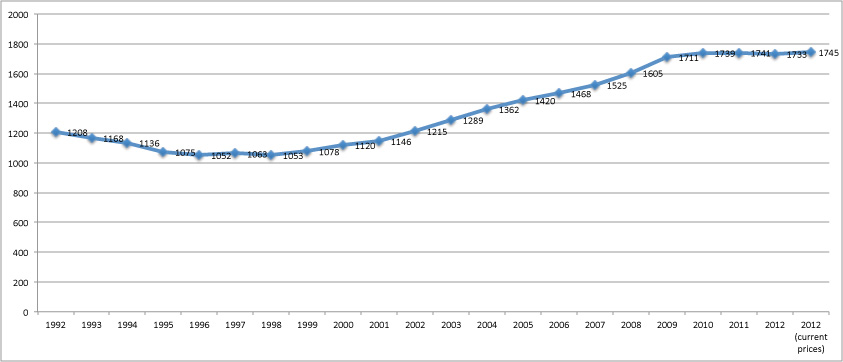
The USA: wars ending, cuts biting
In 2012 the USA’s share of world military spending went below 40 per cent for the first time since the collapse of the Soviet Union. A declining trend that began in 2011 accelerated in 2012, with a drop in US military spending of 6 per cent in real terms to $682 billion.
The decline is mostly the result of reduced war spending, which fell from $159 billion in FY 2011 to $115 billion in FY 2012, and is set to continue its downward course, with only $87 billion requested for 2013.
US military spending in 2012 was also projected to be $15 billion lower than previously planned as a result of cuts to the Department of Defense linked to the 2011 Budget Control Act. The bulk of cuts under this legislation will begin in 2013.
A wider slowdown
Austerity policies also caused falls in military spending in most of Europe in 2012. Since the 2008 global financial crisis, 18 of the 31 countries in the European Union or European NATO have cut military spending by more than 10 per cent in real terms.
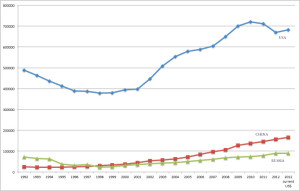
Even in those parts of the world where spending has increased, the effects of the economic crisis can still be seen: slowing economic growth in emerging regions has led to slower rates of growth in military spending. Only the Middle East and North Africa increased their rate of military spending between 2003–2009 and 2009–2012.
The average annual rate of military spending increase in Asia, for instance, has halved from 7.0 per cent per year in 2003–2009, to 3.4 per cent per year in 2009–2012. The slow-down was most dramatic in Central and South Asia, where military spending was growing by an average of 8 per cent per year in 2003–2009, but by only 0.7 per cent a year since 2009, and actually fell in 2012, by 1.6 per cent.
‘All the indications are that world military spending is likely to keep falling for the next two to three years—at least until NATO completes its withdrawal from Afghanistan at the end of 2014,’ said Dr Perlo-Freeman, ‘However, spending in emerging regions will probably go on rising, so the world total will probably bottom out after that.’
Notable regional developments
- Military expenditure in Asia and Oceania rose by 3.3 per cent in 2012. Large increases were seen in Viet Nam, where tensions with China are prompting major naval purchases, and in Indonesia. Spending in India decreased by 2.8 per cent.
- Military spending increased sharply across North Africa, by 7.8 per cent in real terms, the result of both ongoing military modernization and concern over terrorist groups in the Sahel. Military spending in sub-Saharan Africa fell by 3.2 per cent.
- Military spending in the Middle East rose by 8.4 per cent rise in 2012. The largest percentage increase worldwide in 2012 was by Oman (a 51 per cent rise). Saudi Arabia also increased spending by 12 per cent. Spending by Iran, Qatar, Syria and the United Arab Emirates is unknown.
- In Latin America military spending increased by 4.2 per cent in 2012. The largest increases were by Paraguay (43 per cent) and Venezuela (42 per cent). The increasing role of the military in combating drug cartels pushed Mexico’s spending up by 9.7 per cent.
- Military spending in Eastern Europe increased by 15.3 per cent in 2012, the largest regional increase. Besides Russia, Ukraine also increased its spending substantially—by 24 per cent.
N.B.: All percentage increases and decreases are expressed in real terms (constant 2011 prices).
The comprehensive annual update of the SIPRI Military Expenditure Database is accessible from today at SIPRI. SIPRI’s research on military spending monitors developments in military expenditure worldwide and maintains the most comprehensive, consistent and extensive data source available on military expenditure. Military expenditure refers to all government spending on current military forces and activities, including salaries and benefits, operational expenses, arms and equipment purchases, military construction, research and development, and central administration, command and support. SIPRI therefore discourages the use of terms such as ‘arms spending’ when referring to military expenditure, as spending on armaments is usually only a minority of the total.


